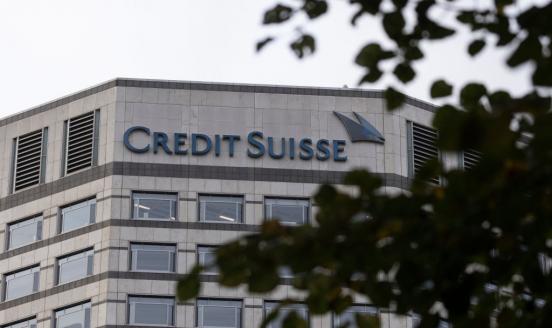Italy’s banking problem is serious but can be fixed
Following the UK vote to exit the European Union, the fragility of the Italian banking system has come into the spotlight. The Economist described it
Italy’s weak banking sector is the largest remaining pocket of financial fragility from the long sequence of banking system problems that has blighted Europe since 2007. The seriousness of the situation has been apparent since at least the comprehensive assessment of 130 euro-area banks in 2014, which immediately preceded the transfer of supervisory authority from national agencies to the European Central Bank (ECB) as part of the broader reform known as banking union. In that assessment’s results, Italy had the lion’s share of problem banks in the euro area (9 out of 25), but corrective action was not immediately taken. The ECB in late 2014 accepted recapitalization plans from the weaker banks which in hindsight were inadequate, and when it eventually tightened its capital requirements a year later, the Bank of Italy appeared to resist. Even so, the belated demands from the ECB were followed by the merger between Banco Popolare and Banca Popolare di Milano and by the takeover of Banca Popolare di Vicenza and of Veneto Banca by Atlante, a fund created under the auspices of the Italian authorities.
Weaknesses remain in other banks, particularly Monte dei Paschi di Siena (MPS), the centuries-old Tuscan institution that has already undergone several rounds of recapitalization and restructuring linked with revelations of significant fraud and mismanagement. Even though there is no indication that MPS is insolvent, media reports suggest that it may perform poorly in the stress testing of 53 European banking groups including 5 Italian ones, whose results will be published on July 29. With 169 billion euros in assets at the end of 2015, MPS is only the 28th-largest banking group in the euro area, but it is third-largest in Italy’s fragmented banking sector. Furthermore, under the banking union policy framework, only 15 Italian banks are directly supervised by the ECB and subject to its newly demanding supervisory practices; hundreds of smaller banks, together representing between one-quarter and one-third of the system’s total assets, are supervised by the Bank of Italy with only indirect oversight by the ECB. Unresolved problems may be lurking in some of these smaller banks, even if one adopts a sanguine assumption that MPS is the last problem case remaining among the banks directly supervised by the ECB.
The Brexit vote of June 23 was followed by a decrease in share prices of listed banks in Italy as elsewhere in Europe, which makes it comparatively harder for them to raise fresh capital from private investors if needed. Even if the UK had chosen to remain in the European Union, however, Italy’s banking problem, and most immediately MPS’s weak balance sheet, would certainly have become the next focus of attention of market participants in Europe once the all-consuming British referendum campaign was over.
The situation of MPS has crystallized a debate about burden sharing.
The situation of MPS has crystallized a debate about burden sharing, or in other terms, whether losses should be imposed on some creditors, especially junior ones, as part of the bank’s capital strengthening. Such imposition of losses, also referred to as “bail-in,” may be justified on several grounds. Public guarantees of bank creditors, and their “bail-out” when a bank fails, distort competition among banks from different European member states. They are a controversial use of public funds, create questionable incentives for banks, and they also contribute to the bank-sovereign vicious circle which threatened the very integrity of the euro area in 2011-12. The European Commission’s competition policy arm (known as DG COMP) has a mandate to keep such state aid in check. Furthermore, the European Union in May 2014 adopted a Bank Recovery and Resolution Directive (BRRD), which attempts to make bail-in the default option when a bank fails. This echoes a global reform effort to mitigate moral hazard in banking systems, labelled “Ending Too-Big-To-Fail” by the Financial Stability Board (FSB), and similar policies adopted in other jurisdictions.
In the United States, despite a lively public debate on “too-big-to-fail” banks, bail-in of bank creditors is an established practice.
In the United States, despite a lively public debate on “too-big-to-fail” banks, bail-in of bank creditors is an established practice. Hundreds of banks have been closed by the US Federal Insurance Deposit Corporation in the last decade, with losses suffered by junior and senior creditors to the extent required by the gaps in their balance sheets. The largest such case happened at a time of extreme financial stress in 2008 with Washington Mutual, a bank that was significantly larger than MPS and whose junior and senior creditors took losses. In the European Union, the imposition of losses on senior creditors has been infrequent, with cases in Denmark in 2010, Cyprus in 2013, Portugal in late 2015 and Austria in 2016, but junior debt bail-in has become widespread in the past five years, not only in the aforementioned countries but also in Greece, Ireland, the Netherlands, Slovenia, Spain, the United Kingdom, and Italy itself.
In the case of Italy, however, a complicating factor is that much (though far from all) of the banks’ junior and senior debt, together with equity, was sold by the banks to their retail customers, with no objection (and until a few years ago, even encouragement in the form of tax incentives) from the public authorities, including the securities regulator CONSOB and the Bank of Italy. This can be viewed as massive misselling, since these instruments, and particularly equity and junior debt, are intrinsically risky and should not have been placed as a safe retail investment product, even before the European Union started consulting on the BRRD legislation in the early 2010s. Such dubious practices have also occurred in other European countries, but have been uniquely pervasive in Italy.
Finding the right balance between bail-out and bail-in can be tricky.
In complex situations such as that of MPS, and possible other future Italian cases, finding the right balance between bail-out and bail-in can be tricky. The Cyprus crisis of 2013 is an example of the European Union imposing too much bail-in, which dramatically eroded trust in the financial system and led to the first-time imposition of capital controls within the euro area. It is justified for the EU authorities to show flexibility, as they have by allowing the Italian authorities to invoke Article 32(4)(d)(ii) of BRRD to provide liquidity support to banks. It is widely expected that a related exemption clause, Article 32(4)(d)(iii), could be used for a “precautionary recapitalization” of MPS, in which case the only bail-in requirements would be on junior creditors, as required under the state aid control framework applied throughout the European Union for more than three years. This would mean that no senior creditors or depositors would suffer any losses. There would be no contagion to other euro area countries, since the principle of junior debt bail-in is established and priced-in outside of Italy. Additionally, DG COMP would allow the compensation of those retail junior debt holders that can be considered victims of misselling from bail-in losses, as it did in the case of four Italian banks rescued in late 2015 and similarly in Spain in 2012.
Everyone agrees that holders of equity shares are not entitled to compensation, even though their losses can be painful as well. As a consequence, the discussion on MPS is centred on those junior debt holders who cannot be viewed as innocent victims of misselling, namely well-to-do families, professional investors and other banks. The Italian government appears to be adamantly opposed to any bail-in of these. But its stance is hard to justify by considerations of financial stability. Banks issue much less junior debt now, and one hopes they sell it only to knowledgeable investors anyway. Assuming minimally competent public communication, there is no risk whatsoever of a bank run. In sum, a reasonable compromise would involve bailing in junior creditors, presumably in the form of a debt-equity swap; compensating the retail victims of misselling; and sparing all senior creditors and depositors under the BRRD’s exemption for precautionary recapitalizations.
The domestic and international debate on bail-in in Italy has become a vehicle for ideological posturing, not without multiple ironies.
Sadly, the domestic and international debate on bail-in in Italy has been largely disconnected from the facts and has become a vehicle for ideological posturing, not without multiple ironies. Domestically, the Italian government’s apparent uncompromising anti-bail-in position advocates the use of taxpayers’ money to reimburse investors well beyond the widows, orphans, pensioners and other modest households who were abused by banks they shouldn’t have trusted blindly. Internationally, a number of established figures in the financial industry have voiced support to that pro-bail-out position, including recently JP Morgan’s chief executive Jamie Dimon on a visit to Rome. The irony here is that many of the same bankers pay enthusiastic lip-service to the FSB’s and other authorities’ efforts to “end too-big-to-fail:” not for the first time, the financial industry’s commitments to market discipline evaporate instantaneously when tested in practice as opposed to theory. The same observation, sadly, applies to many voices in the international financial press, still reeling from the UK referendum trauma. The Economist is far from alone here: a Financial Times columnist lambasted DG COMP’s opposition to a taxpayer-funded bailout of all MPS creditors as that of “a truculent EU unwilling to show pragmatism in the face of popular outrage about immigration.” So did Larry Summers, belittling the disciplines of EU competition and banking law as “some international agreement,” as if treaties should not be considered binding.
The compromise treatment of MPS outlined above would of course not be enough. A more comprehensive approach to Italy’s banking fragility is overdue, even though political realities may delay it until after a constitutional referendum due in October 2016. The tried-and-tested way to resolve Italy’s banking problem would be a system-wide exercise of “triage,” with an ad hoc balance sheet assessment of banks representing the vast majority of the system’s total assets, and thus including a number of the smaller banks that currently escape direct ECB supervision. To be credible, the assessment should be directly conducted by the ECB, possibly also involving evaluators from the private sector as was done in several EU countries including Ireland, Greece, Spain and Cyprus. Those banks that would be found unviable should then be resolved using the procedures set out by BRRD, again with adequate compensation of retail victims of misselling. In the unlikely case that EU authorities would opine that this may lead to systemic instability, then the option might be considered of reactivating the possibility of direct bank recapitalization by the European Stability Mechanism, the euro-area fund based in Luxembourg, with conditionality for the Italian authorities in a spirit comparable to that of the Spanish program of July 2012. Also, the governance of many Italian banks should be further reformed to prevent them being captured by local political interests. In parallel, echoing recent recommendations by the International Monetary Fund in two recent papers, the Italian governments should pursue reforms and allocate resources to facilitate out-of-court settlements and court judgments in order to facilitate the seizing of collateral on bad debt, and thus increase the currently depressed value of Italian banks’ vast portfolios of non-performing loans.
Assuming a modicum of cooperation by all public authorities involved, Italy’s banking problem could thus be solved in the first half of 2017 if not earlier.
Assuming a modicum of cooperation by all public authorities involved, Italy’s banking problem could thus be solved in the first half of 2017 if not earlier. By then, it is to be hoped that the euro area will have almost entirely addressed its legacy of financial fragility from the past years of crisis. This should in turn allow leaders to move towards making the banking union more consistent and resilient, with more risk-sharing and sounder incentives for public authorities and banks. The agenda should include a European deposit insurance scheme, as the European Commission proposed last November; limits on banks’ exposures to individual euro-area sovereigns, with a lengthy transition period to avoid disruption in sovereign debt markets; harmonizing bank insolvency law across the euro area, an indispensable complement to BRRD; and perhaps also amending BRRD itself in the light of lessons learned from the Italian experience.
Moreover, that same experience suggests that a sustainable banking union will require additional arrangements for the protection of customers of financial services. The fact that banks were allowed to sell their own risky debt to retail households as a savings product for so long is disturbing, as is the fact that no one in Italy appears to have taken any accountability yet for this policy failure. EU authorities should draw the right lessons so that similar fiascos do not happen again.



